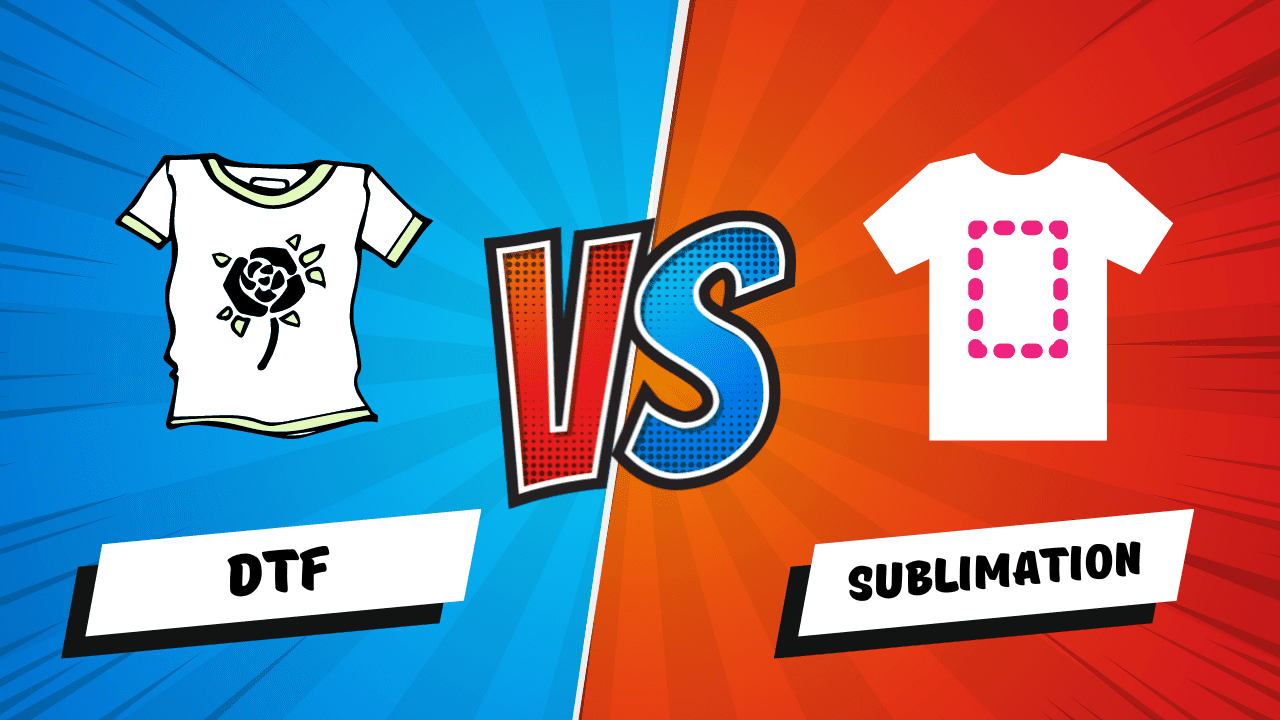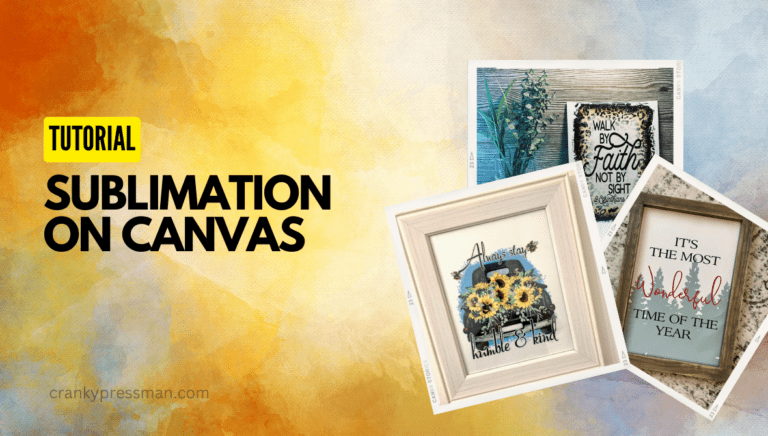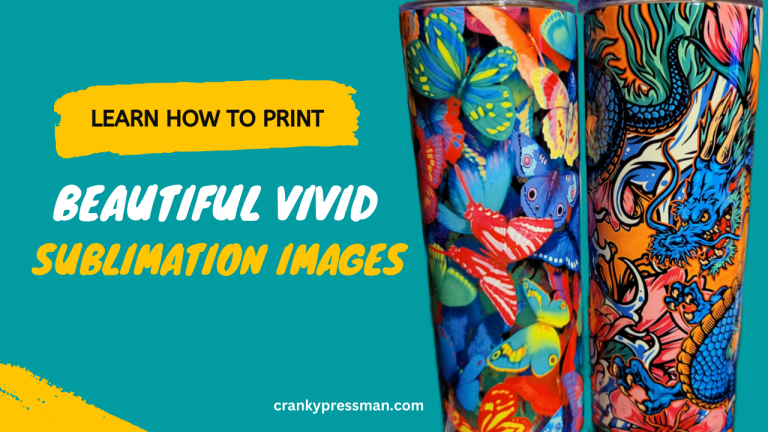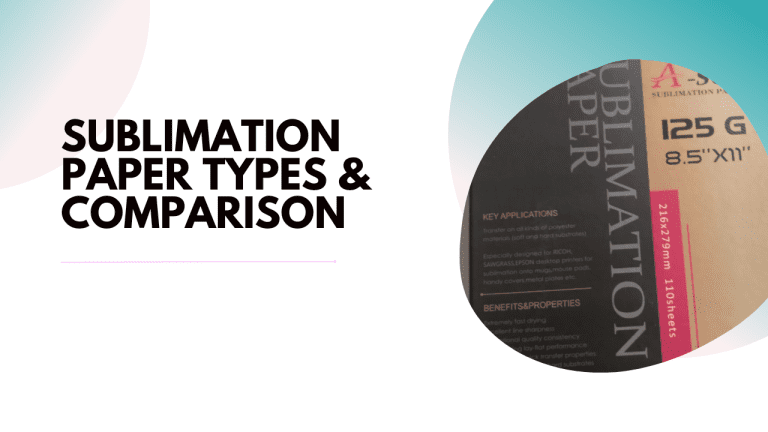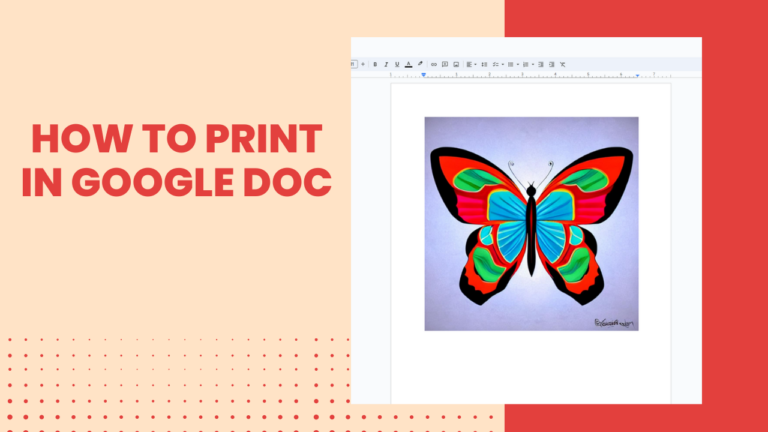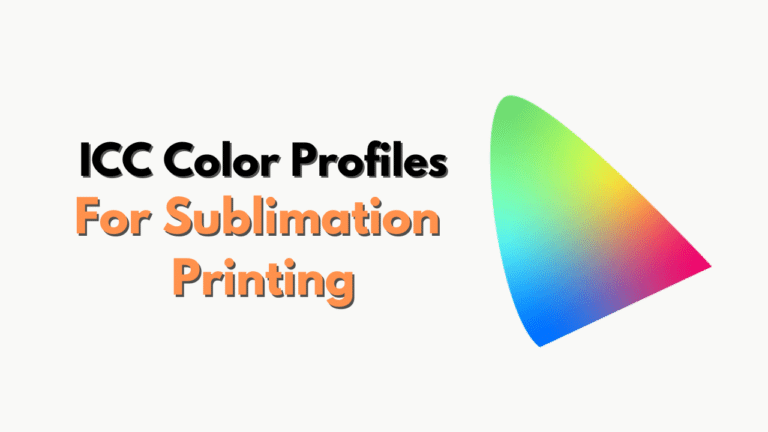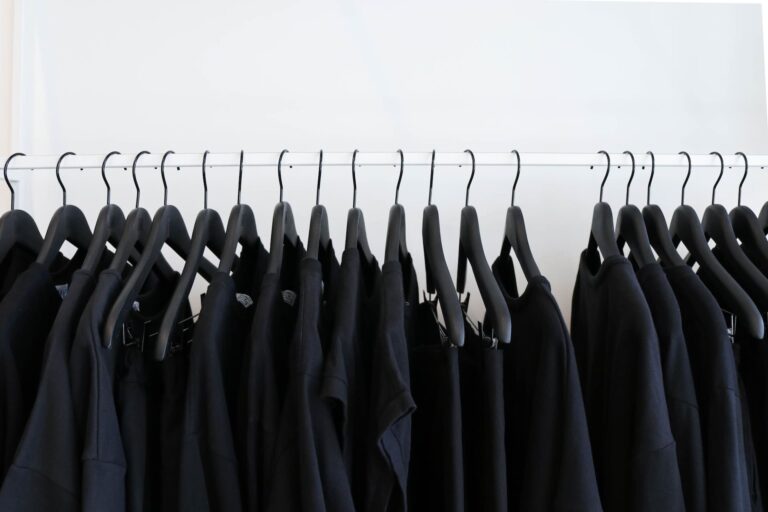DTF vs Sublimation Printing: What’s the Difference?
Though it’s certainly the more common technique, sublimation printing isn’t the only way to impress your impressive designs onto something. I’m also fond of DTF (Direct To Film) transference, a subtly different but equally valid method of creating great designs. It’s not so much a case of “DTF vs Sublimation“, as both have their fair share of advantages and disadvantages.
With that in mind, I thought I’d compare these two printing styles, so that you can choose which is the better option for creating your custom designs. I’ve considered as much as I can think of, from compatibility to quality, so you can make an informed decision before investing in your latest craft project!
Key takeaways:
While both techniques are used for printing, DTF involves direct printing onto a film while sublimation printing uses a heat transfer process. Sublimation printing is more accessible but lower-quality, whereas DTF is more expensive but renders better-looking designs.
What is sublimation printing?
Sublimation printing is a technique that uses ink-absorbent paper to print the design onto paper and then transfer it to the substrate using heat. Unlike other printing techniques, the ink chemically bonds with the substrate and becomes a part of it. The process is simple and quick for great results. Sublimation printing is particularly advantageous for those who want photorealistic images transferred onto clothing such as t-shirts, as it makes it look like the design was almost always part of the clothing.
What is DTF printing?
DTF (Direct-to-Film) is a printing technique that involves printing images directly onto a film sheet using specialized inkjet printers, which is then heat-transferred onto the chosen media. Though this sounds similar, the subtle difference is that DTF printing can be applied to almost any surface or subject for vivid results thanks to it using a PET sheet rather than ink-absorbent sublimation paper. It sits as an extra layer above the fabric, with a nice texture and great color.
DTF vs Sublimation printing
As I say, it’s less about DTF being better than sublimation printing or vice versa – it’s about which is better under certain conditions. Some people may have limited budgets or space, or a time limit that requires rapid turnarounds. With that in mind, let’s take a look at where each printing method excels.
Equipment
DTF printing requires a DTF printer, surprise surprise, but these are actually relatively low-cost instruments that cost about the same as a cheap laser printer. Where the complications begin is that you also need a fair handful of other accessories such as adhesive powder, CMYK and white inks, the aforementioned PET sheets and a curing oven – alongside the heat press.
Sublimation printers have the slight advantage in that you don’t necessarily need a dedicated device, rather you can convert select InkJet printers for sublimation. This can save you money if you so happen to have one lying around, but otherwise these units are more expensive. And though you need less of it, the cost of the best sublimation paper and ink can set you back. The overlapping element both printing techniques need is a heat-press, to actually place your design on the subject.
The printing industry is often referred to as having a “razor and blades” model of business: you get the printer relatively cheap, but the ink is what’s expensive – like razors and their blades. The cost of equipment can mount up if you’re not careful.
In summary, the cost of a DTF printer is low, but other components cost more that can raise the price. Sublimation is more expensive individually but requires less overall expense.
Printing process
Sublimation printing is a two-step process: first you print the designs on the sublimation paper, then you use a heat press to transfer it to the substrate
However, the printing time varies based on the kind of substrate. For example, vinyl runs at a different temperature to polyester and can burn more easily if you aren’t careful.
Make sure to have calibrated the right heat press settings for your material to get the best results.
In DTF printing, there is an extra step involved. After printing the design on the PET sheet, apply adhesive powder at the back before you place the transfer sheet into a curing oven to melt the powder. Only then can you press the design on the substrate with the help of a heat press.
It becomes a longer process, and a messier one at that with the adhesive powder.
Types of Materials
Sublimation printing favors polyester and other synthetic fibers as substrates. In contrast, natural fibers and other materials pose a difficulty to sublimate.
You can use a few workarounds, like a laminate sheet or sublimation spray, to print on some materials like canvas. But still, the choice of materials is relatively small in sublimation.
DTF printing works with all types of materials :be it synthetic fibers, natural fibers, wood, metal, or fiberglass. You can print on it as long as you can place the material in the heat press. Unlike sublimation, the color of the substrate isn’t a concern because DTF uses white color along with CMYK colors.
Print Results
Sublimation printing is a chemical process of transferring ink from paper to fabric or any other substrate. The result binds with the substrate and looks photo-realistic. For logos, images or other graphics on white t-shirts, sublimation is the ideal choice – especially if you want a textureless feel. While you can print on t-shirts of any color, light or dark shades, sublimation works best on white t-shirts.
You cannot print white color in sublimation, as there is no white sublimation ink.
DTF can print white as well as CMYK color combinations. The output is detailed, and the colors appear almost like the input design. However, they are noticeably printed on top of the fabric rather than part of it, which may be a turn-off for some.
Think of sublimation printing as a PNG picture file, with no background so it can fit anywhere seamlessly. DTF is more like a JPEG: higher-quality, but standalone.
Design Longevity
Sublimation designs last longer, period. Due to the chemical process, the colors become part of the fabric. So they won’t fade, even after multiple washes. There is no chance of the design peeling off the material.
DFT printing isn’t a chemical process. The design sits on the top of the fabric and will slowly crack and peel off after multiple washes. Despite the good appearance, DTF isn’t suitable for fabric substrates if you want the design to remain as long as possible.
DTF vs Sublimation: Environmental Impact
Both methods of printing have their pros and cons, some of which could have an impact on the environment. Both printing methods score quite highly when it comes to ink usage, with DTF printers being extremely ink efficient. While sublimation printing may just fall short, it is still regarded as being quite eco-friendly too. Of course, sublimation printing tends to use less energy in the process than DTF, however, when you add in the additional heat press steps, things can even out.
DTF printing involves using adhesive powders, some of which could be considered a chemical additive and potentially impact the environment. Sublimation printing however doesn’t remotely discharge any additional chemicals. That being said, with sublimation printing if the heat press settings are not optimal, you could easily ruin your print, resulting in a waste of ink, paper, and substrate material.
DTF vs Sublimation: which should you choose?
The choice will solely depend on the type of substrate and the industry you want to target. Sublimation is an excellent option if you want to start an apparel customization business (light-colored designs).
It doesn’t have a massive upfront cost, and the barrier to entry is relatively low — a great way to enter the DIY printing industry. You can even leverage some hacks to print on non-favorable substrates like cotton with the help of sublimation spray.
DTF is best if you want to build a printing business and need the absolute best-looking design and the capability to print on any substrate. The process is time-consuming compared to sublimation printing. It will cost a lot, so make up your mind and plan before investing in DTF printing.
FAQs
Yes, but it’s worth noting that they aren’t the only cost. You also need paper, ink, adhesive power and a curing oven, all of which cost a great deal.
There’s a number of causes as to why your prints are faded and how to make sublimation brighter. We recommend cleaning your printheads and checking your ink levels as the first things to change.
Final Word
As I said at the top, DTF vs Sublimation isn’t a fair fight as both have their places. Consider your needs, your preferences of price and quality, and ultimately your skill level; before investing in either a DTF or sublimation printer.
Regardless of whether you’re a beginner or a veteran of the industry, I hope you found some useful information today. Stay tuned here for more insights on the world of printing.

